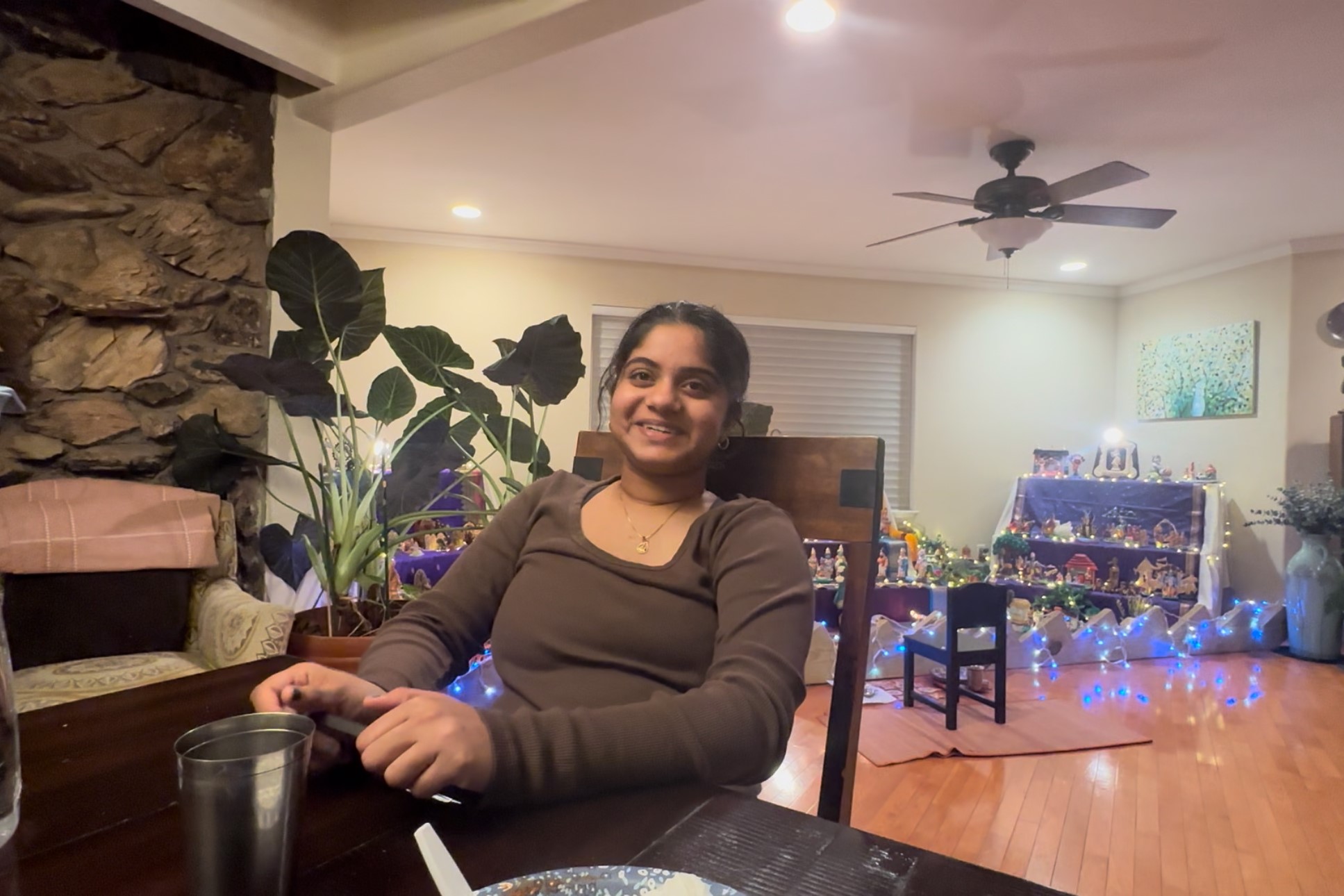The importance of Indian Festivals for Indian American teenagers in the US
Juggling two completely different cultures is harder than it looks but what makes it more challenging is the constant comments we face from each side, telling us we are not enough.
 Aprameya Rupanagunta with the Golu her family set up this year. / Ritu Marwah
Aprameya Rupanagunta with the Golu her family set up this year. / Ritu Marwah
As fall rolls around, the myriad of Indian festivals and celebrations come closer. For most Indians who were born and brought up in India, this season has always been a part of their lives and those around them but for Indian Americans who never actually lived in India, these months mean something else.
For most of the year, Indian American teens like myself live in two different worlds. The outside world, where we are accustomed to American culture but still seen as Indian by everyone else, and the world at our homes. The world encompasses thousands of years of history and culture from a country thousands of miles away where we are seen as completely American. For most of the year, the difference between our two worlds is stark, except when festival season comes.
As I’ve grown up, I’ve tried to figure out why Indian Americans feel more connected to their heritage during this time of year. Logically, it would make sense that we would feel weird celebrating a non-American holiday in America because it differs from what the perfect American teenager looks like. So why do we feel more connected during this time of year? The best I’ve come to answering this question is that this time of year festivals like Navratri and Diwali, facilitate a relationship between non-Native Indians and their culture.
On an everyday basis, we are forced to attempt to connect to our culture in India through our parents who have lived there and experienced the culture firsthand But these festivals offer a way to individually connect to our culture.
My family’s favorite Indian festival is Bommala Koluvu, also known as Golu. While the traditional way to celebrate this festival is to just put up stairs, typically nine, filled with dolls and idols of God, showing mythology, my family goes the extra mile. We make our koluvu with themes ranging from Indian mythology to building the entire California coastline in our living room.
Thanks to my mother's enthusiasm, my sister and I grew up looking forward to this festival because we could build anything we wanted to (building Hogwarts and the rest of the Harry Potter world is still something we plan to do). When I was younger, the reason I enjoyed Bommala Koluvu was because I got to play with the dolls on display but as I have gotten older, I realized that I am more interested in what those dolls mean. Bommala Koluvu offers a visual representation of the many stories we are told as kids and a concrete object that allows us to connect to our culture.
Juggling two completely different cultures is harder than it looks but what makes it more challenging is the constant comments we face from each side, telling us we are not enough. But what I’ve learned is that it does not matter what people who belong to those cultures have to say about how we interpret our identities. Our identities are made of the personal connection we can make with the different cultures that are a part of us. Navarti season is the time of year when we can fully embrace what it means to be an Indian American, a combination of two cultures.
The author is a 10th grade student at Monta Vista High School.


 Aprameya Rupanagunta
Aprameya Rupanagunta


.jpg)
.jpg)
.png)
.png)

.png)

.png)
.jpg)

Comments
Start the conversation
Become a member of New India Abroad to start commenting.
Sign Up Now
Already have an account? Login